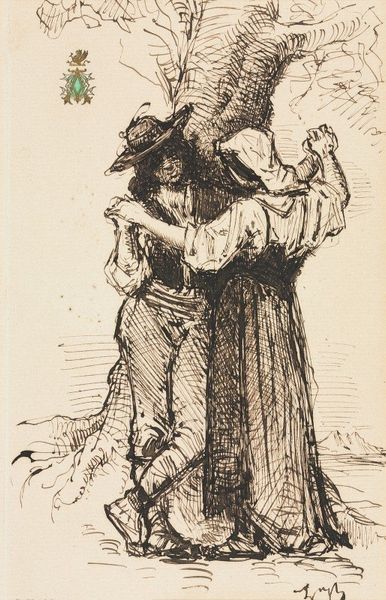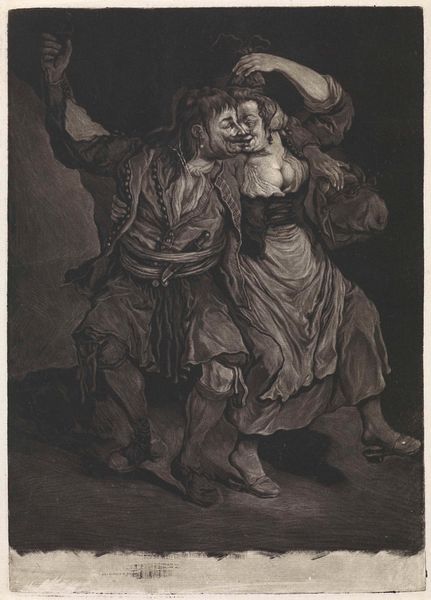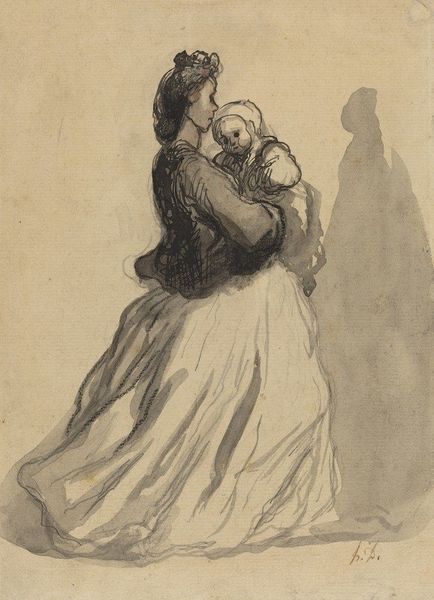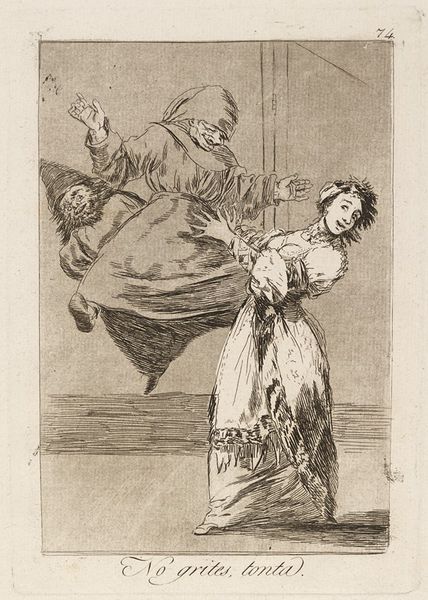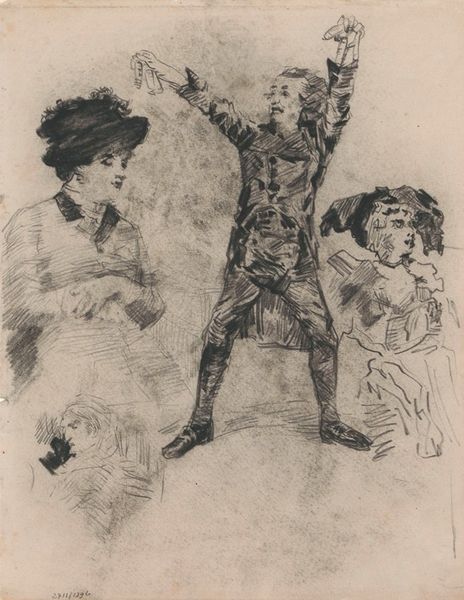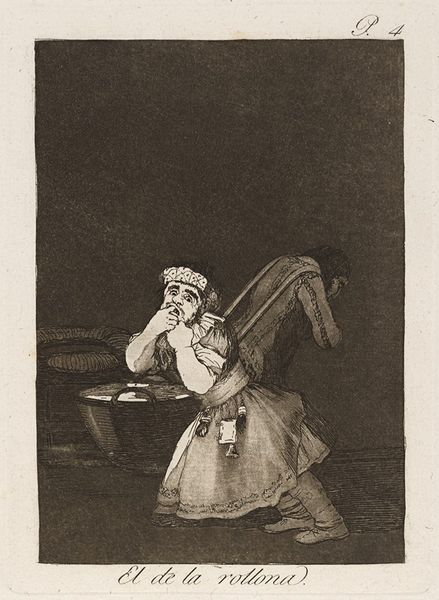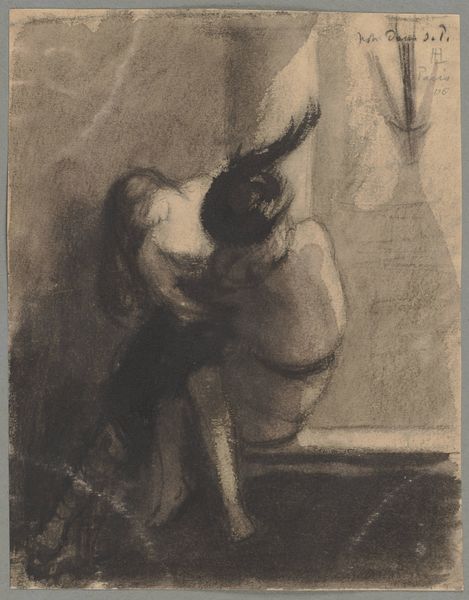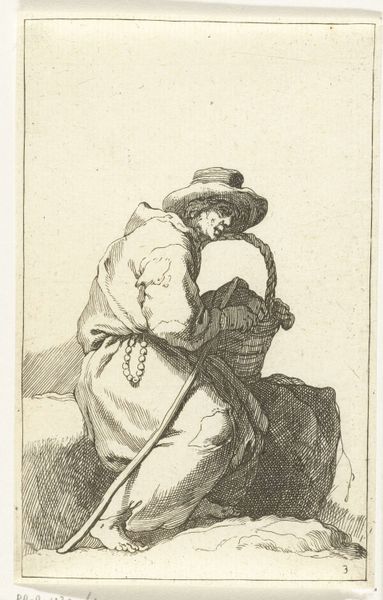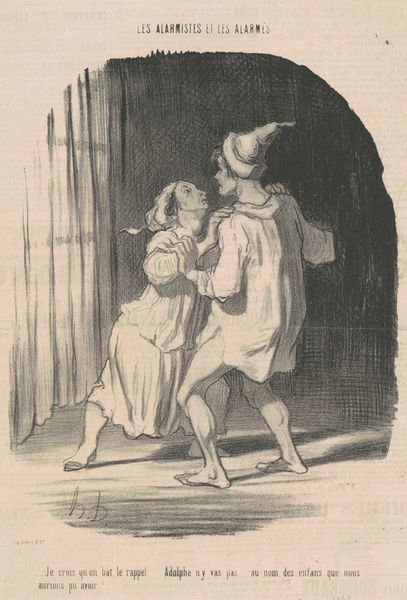
painting, oil-paint
#
portrait
#
figurative
#
painting
#
oil-paint
#
figuration
#
oil painting
#
romanticism
#
genre-painting
#
portrait art
#
watercolor
Copyright: Public Domain: Artvee
Curator: This lively oil painting, "Dancing Italian," was created circa 1839 by Wilhelm Marstrand. What's your initial take? Editor: My eye is immediately drawn to the dancer's pose, how he defies gravity, one leg cocked back, his arms raised with a handkerchief—a burst of kinetic energy constrained within this rectangle of canvas. Curator: Absolutely. Considering Marstrand's Danish background, his encounter with Italian culture shaped much of his oeuvre. This work, a product of its time, romanticizes southern European peasant life, which also can be considered an artistic commodity of cultural exchange. Editor: I agree; however, let's not overlook the formal elements creating the romantic ideal: the vibrant sash around his waist pops against the darker hues of his jacket and breeches, doesn’t it? Note also how Marstrand uses light to highlight the dancer's face, even though it's obscured by his hat, and contrasts that with the softer, diffused light on the woman observing. It accentuates their separate roles. Curator: The division of labor is key. His vigorous dance serves as entertainment, while her role seems primarily to observe and, perhaps, to admire. One can investigate the dynamic of spectacle and spectatorship, performance and consumption in a historical context. We should reflect on the societal norms dictating these gendered performances. Editor: Fair point. But can we consider that the loose brushwork also contributes to this sense of dynamism and immediacy? Marstrand's choice of oil allows for the layering of paint, which builds depth and texture, enhancing the tactile quality. The painting isn't simply representing a dance; it's materializing its energy through visible strokes. Curator: These brushstrokes are applied as part of artistic production rooted in 19th-century studio practices—techniques accessible through specialized training and material sourcing that influence the commodification and subsequent interpretation. Editor: Still, regardless of the socio-economic implications, I keep circling back to Marstrand's astute use of contrasting values. He directs our vision carefully with strategic application of color. Curator: And the interplay of production, labor and representation continues to generate new views about Romantic era art. Editor: Leaving us plenty to appreciate both visually and intellectually!
Comments
No comments
Be the first to comment and join the conversation on the ultimate creative platform.
